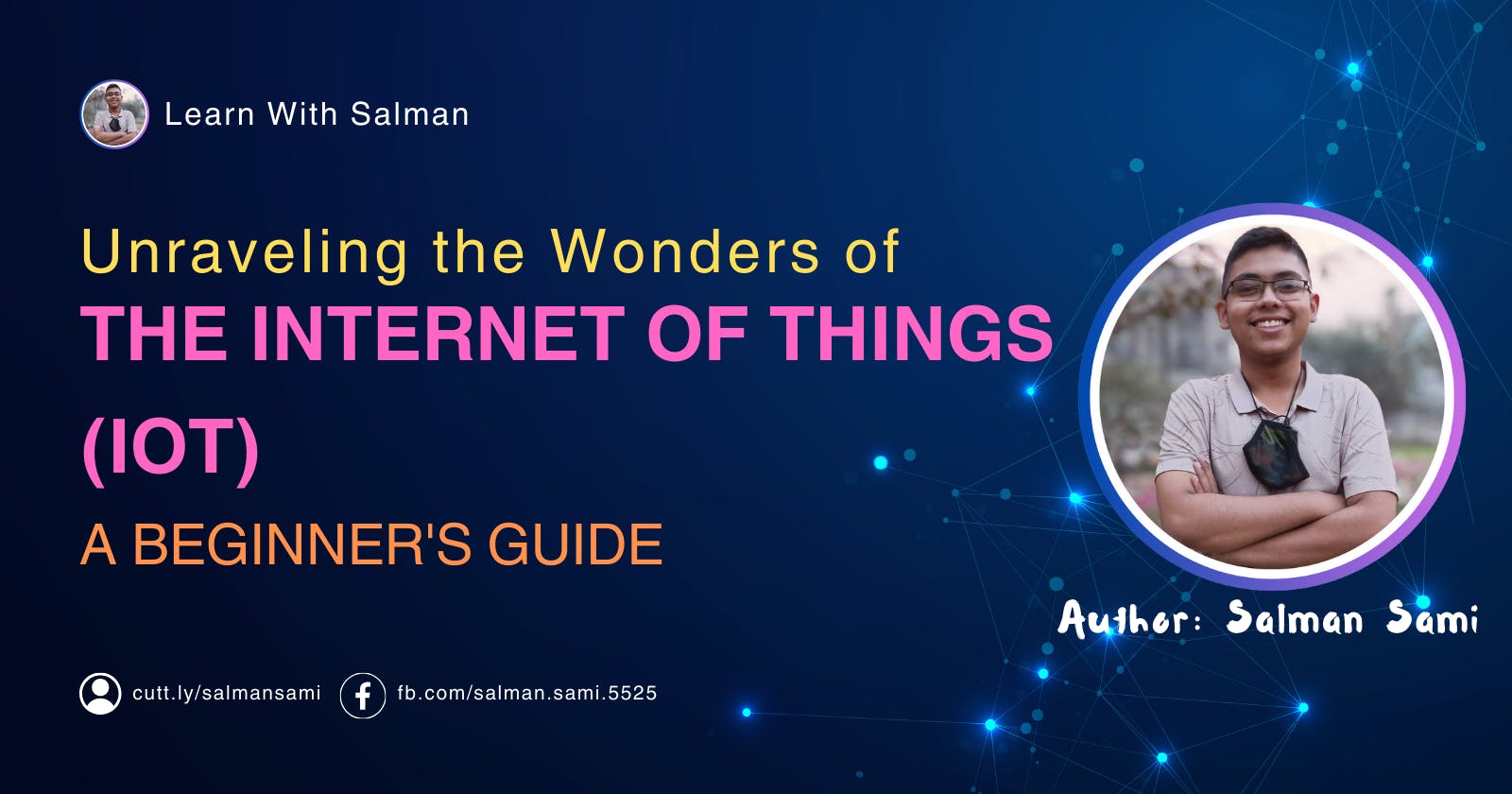Unraveling the Wonders of the Internet of Things (IoT): A Beginner's Guide
Introduction:
Welcome to the fascinating world of the Internet of Things (IoT), where everyday objects transform into smart, connected devices, creating a seamless web of interactivity and convenience. In this beginner-friendly guide, we'll embark on a journey to demystify the concept of IoT, exploring what it is, how it works, and the exciting possibilities it unlocks.
Defining IoT:
At its core, the Internet of Things refers to the network of physical objects embedded with sensors, software, and other technologies that enable them to collect and exchange data. These "smart" devices can communicate with each other and with us, creating a dynamic ecosystem where information flows effortlessly.
How Does IoT Work?
Imagine your alarm clock not just waking you up but also notifying your coffee maker to start brewing your favorite blend. This seamless coordination is made possible by IoT. Devices within the IoT ecosystem communicate through the internet, sharing valuable data to enhance efficiency and convenience.
Here's a simple breakdown:
Sensors: Smart devices are equipped with sensors that capture real-world data. These sensors could measure temperature, humidity, motion, and more.
Connectivity: The data collected by sensors is sent to the cloud or a centralized system through the internet. This connectivity is the backbone of IoT.
Data Processing: In the cloud, the data is processed, analyzed, and translated into actionable insights. This step empowers devices to make informed decisions.
Action: Based on the processed data, IoT devices can trigger actions autonomously. For instance, adjusting room temperature, ordering supplies, or sending alerts.
Everyday Examples:
Let's bring IoT to life with a few relatable examples:
Smart Home Devices: From thermostats that learn your preferences to lights that respond to voice commands, IoT makes our homes intelligent and responsive.
Wearable Technology: Fitness trackers and smartwatches seamlessly monitor our health and share insights with our smartphones, creating a holistic approach to well-being.
Connected Cars: IoT is revolutionizing the automotive industry with features like GPS navigation, real-time traffic updates, and even self-driving capabilities.
Challenges and Considerations:
Before we dive into the future possibilities of IoT, let's acknowledge some of the challenges that accompany this technological marvel. As our devices become more interconnected, concerns about privacy and data security naturally arise. The vast amount of information generated by IoT devices requires robust measures to ensure that personal and sensitive data remains protected. Additionally, the diversity of IoT devices often leads to fragmented standards, making seamless communication between different brands and platforms a challenge. Nevertheless, the IoT community is actively working on addressing these issues to create a more secure and standardized environment.
Real-World Impact:
The impact of IoT extends far beyond the conveniences it brings to our daily lives. In agriculture, smart sensors are revolutionizing farming practices, optimizing irrigation, and monitoring crop health. In healthcare, IoT devices enable remote patient monitoring, allowing doctors to track vital signs and provide timely interventions. The industrial sector leverages IoT for predictive maintenance, reducing downtime and increasing efficiency. These real-world applications highlight how IoT is not just a futuristic concept but a transformative force in various industries.
Empowering Industries:
Industries are undergoing a paradigm shift with the integration of IoT. In manufacturing, smart factories leverage IoT to enhance automation, monitor equipment health, and streamline production processes. Retailers use IoT for inventory management and personalized customer experiences. The energy sector embraces IoT for smart grid systems, optimizing energy distribution and consumption. The transformative potential of IoT across industries underscores its role as a catalyst for innovation and efficiency.
The Future of IoT:
As we peer into the future of IoT, the possibilities seem boundless. Smart cities, where interconnected devices enhance urban living by optimizing traffic flow, managing waste, and ensuring public safety, are on the horizon. The healthcare industry is poised for further transformation with the proliferation of health-monitoring wearables and smart medical devices. With advancements in edge computing, we can expect faster data processing, reducing latency and enabling more real-time applications.
Conclusion:
In conclusion, the Internet of Things is not merely a technological trend but a fundamental shift in how we interact with the world around us. Despite the challenges, the real-world impact and the transformative potential across industries make IoT an integral part of our collective future. So, whether you're adjusting your home's thermostat from your smartphone or witnessing the evolution of smart cities, you're participating in a journey that is reshaping the way we live, work, and connect. Embrace the future; it's smart, it's connected, it's IoT!
